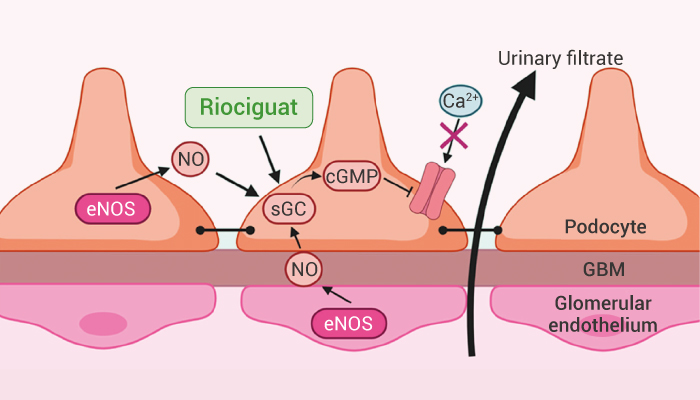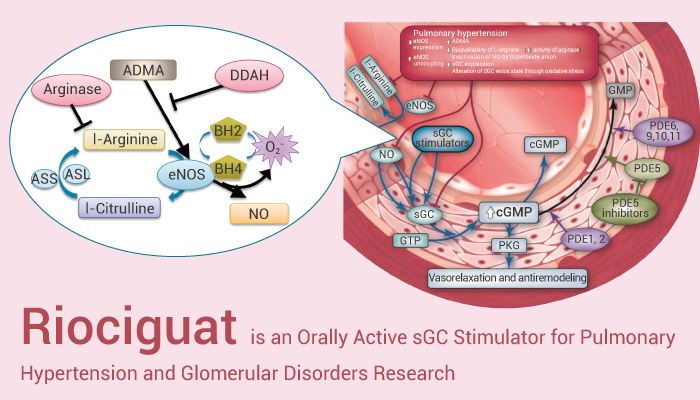Pulmonary arterial hypertension (PAH) and chronic thromboembolic pulmonary hypertension (CTEPH) are progressive and debilitating diseases. Briefly, They characterized by gradual obstruction of the pulmonary vasculature, leading to elevated pulmonary artery pressure (PAP) and increased pulmonary vascular resistance (PVR). If not treated in time, it can cause heart failure and death. Riociguat, a new type of soluble guanylate cyclase (sGC) stimulator, has been approved to treat these diseases.
In vitro studies, Riociguat increased sGC activity by up to 73 times. When working with another substance called NO, it boosted sGC activity up to 112 times. Unlike other treatments, it doesn’t need natural NO production and increases cGMP levels through a different method.
Riociguat is a sGC stimulator for PAH and glomerular disorders research

Notably, sGC is the molecular target for several drugs such as Riociguat, which used for non-renal disorders. However, it might also hold therapeutic potential for glomerular diseases by interfering with injurious TRPC6 signaling in the podocyte.
Researchers use human glomerular endothelial cells and podocytes to study the therapeutic potential of the sGC stimulator Riociguat. Inducing Podocyte injury by Adriamycin incubation for 24 h, with or without the NO-donor S-Nitroso-N-acetyl-DL-penicillamine (SNAP), the sGC stimulator Riociguat or the TRPC6 inhibitor Larixyl Acetate (LA). Firstly, NO and Riociguat stimulated cGMP synthesis in podocytes, decreased Adriamycin-induced TRPC6 expression. Secondly, it also inhibited the Adriamycin-induced TRPC6-mediated Ca2+ influx and reduced podocyte injury. Inhibiting sGC activity with ODQ or blocking TRPC6 activity with LA negates the protective effects of Riociguat and NO. Data demonstrate a glomerular (e)NOS-NO-sGC-cGMP-TRPC6 pathway that prevents podocyte injury.
To sumup, Riociguat is an orally active sGC stimulator for the research of pulmonary hypertension and glomerular disorders.
Reference:
[1] Ghofrani HA, et al. Chest. 2017 Feb;151(2):468-480.
[2] Daan ‘t Hart, et al. Int J Mol Sci. 2021 Nov 19;22(22):12485.
